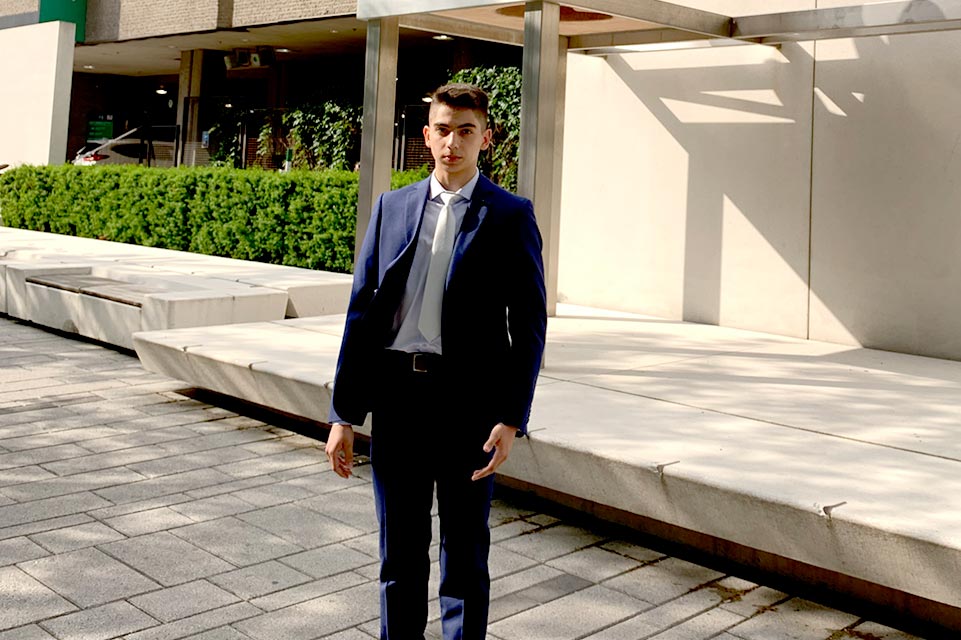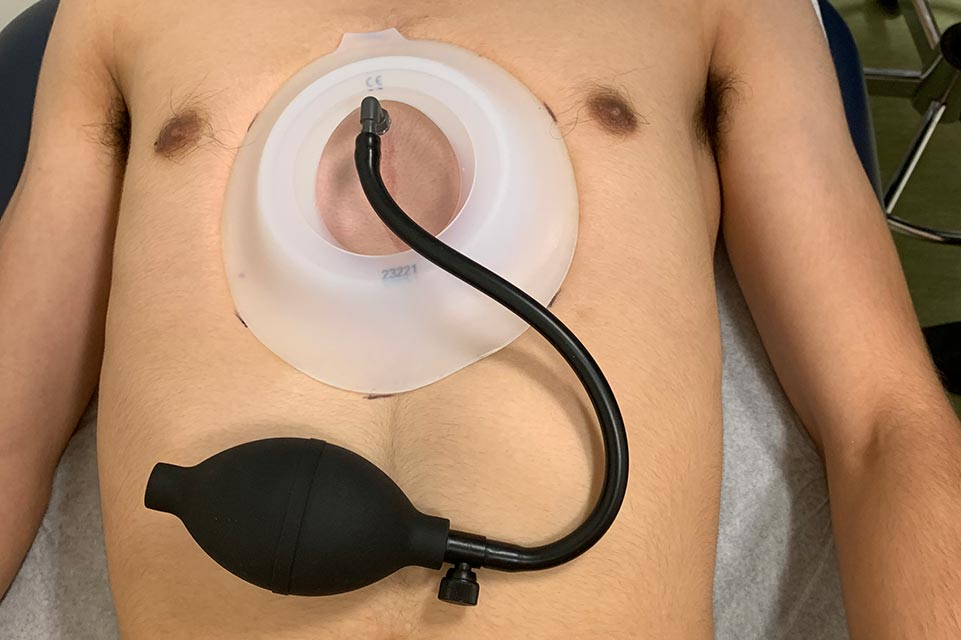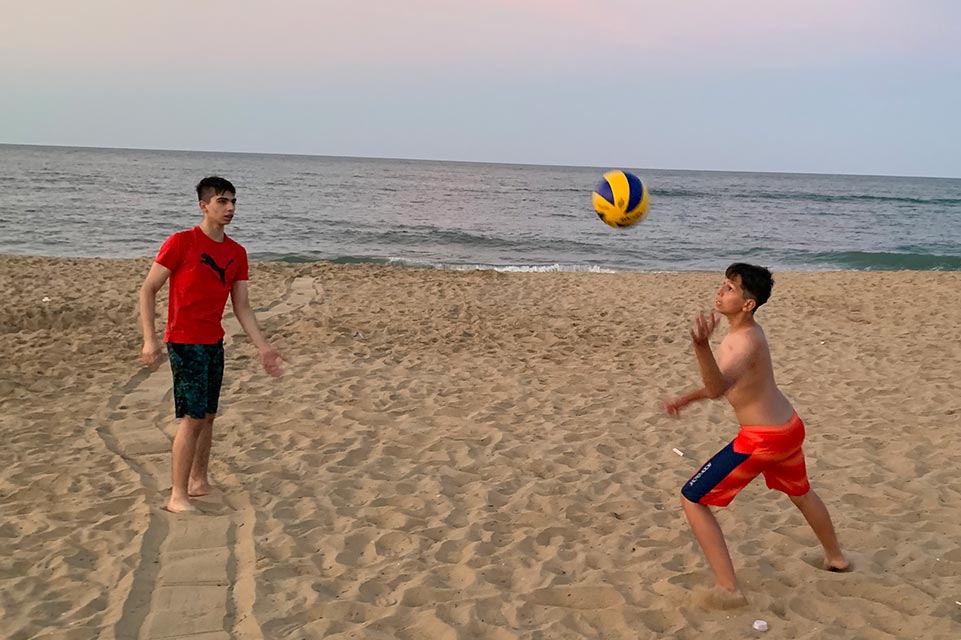Cryoablation: Perfect Pain Management Technology

Victor in front of his school
Victor grew up without any health concerns until he was 15 years old, when suddenly a hollow cavity appeared in the middle of his chest. Victor’s mother, Claudia, whisked him off to the pediatrician, who referred the teen to Shriners Hospitals for Children — Canada, where he was diagnosed with pectus excavatum.
Pectus excavatum, also known as “funnel chest” or “sunken chest,” characterized by a depression of the front of the chest, represents a large portion of chest wall deformities. The lower portion of the breastbone (sternum) sinks inward. The condition can be bothersome to teens from aesthetic and psychological perspectives, but can also lead to heart and lung issues. As of today, we do not know what causes pectus excavatum, but it is sometimes due to a genetic condition.
At the hospital, the family met with Jean-Martin Laberge, M.D., who suggested surgery. But Claudia, fearful of the operation, opted for a non-invasive approach: the vacuum bell. The device is connected to a pump and then placed on the front of the chest. The pump is used to draw the air out of the device, creating a vacuum that pulls the chest and breastbone forward. The device is worn all day, and over time the chest wall and breastbone stay forward on their own and hold a new shape.

Victor trying the vacuum bell as a first attempt to treat pectus excavatum
However, after four months with the vacuum bell, it was clear that the device would not produce the desired result in this case. Victor was not afraid of surgery and looked forward to it so he could finally feel comfortable taking his shirt off at the beach. In preparation for the NUSS surgery (named after Dr. Donald Nuss), Victor underwent a series of tests, including X-rays, CT scans, ultrasounds and cardiac exams. Since meeting with Dr. Laberge, Claudia was confident and had a better grasp of the hospital's expertise in treating this type of pathology. After getting through delays due to COVID-19, the operation finally took place in July 2022, which suited Victor, as he was was able to finish his last year of college with peace of mind. Victor is one of the first 10 Shriners Hospitals for Children — Canada patients to benefit from cryoablation, a technology that helps manage post-op pain.
In this video, Dr. Sherif Emil, one of the first physicians to introduce this technology to our hospital, explains more about cryoablation:

Victor’s recovery was great. Thanks to cryoablation, he was out of the hospital the day after surgery with very little pain and no need for painkillers. A little ibuprofen over the first two weeks did the trick. The greatest part for the young man was that he didn’t feel any pain as his nerves slowly regenerated over the following months. Victor needed to be careful during his recovery to avoid injury, as he had no feeling in his chest and could accidentally hurt himself. He also needed time for the bar to anchor in his chest.
The hardest part for Victor was that he had to sleep on his back for a while. “The operation changed my life. I feel normal again and can go back to enjoying my life," he said. "Dr. Laberge and the entire team at Shriners Hospitals for Children — Canada took such good care of us. The words are not enough to express all my gratitude and appreciation to Dr. Laberge and his team for their constant support, empathy and high professionalism. With their help, all my fears and the pain were gone. They were always extremely forthcoming with explanations and were able to reassure my family and me. This was an incredible journey for me, which changed not only my body but also my mind and my heart forever.”

Victor playing on the beach with his brother
Keep In Touch
Join our mailing list to stay up to date on everything that's happening at Shriners Children's.
